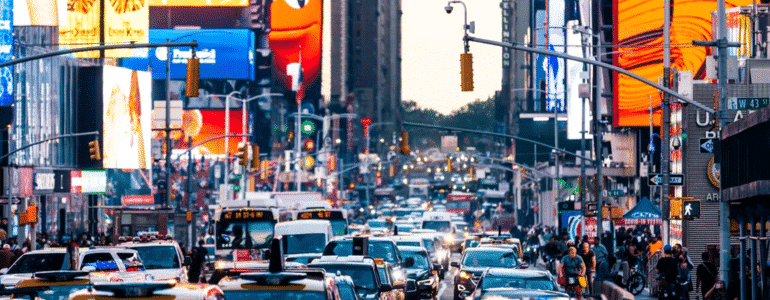Another thing we have in common with the airline industry: attire.
I have a travel outfit.
I sleep on planes (sometimes more than I do at home), so I snuggle up in a pair of cozy track pants, the softest and loosest long sleeve shirt I can find, and a sweatshirt that sometimes doubles as a pillow.
I am wearing that ensemble right this second as I prepare to board a red eye from Portland to JFK. And as I look around the terminal, everyone else looks pretty casually dressed as well. Some, to be honest, look pretty sloppily dressed.
But that wasn’t always the case, now was it?
Used to be that you dressed up to fly. Remember that? It was a high class event to board a plane, and it deserved the respect of a nice outfit, maybe even a tie . . . but certainly not track pants.
See where I’m going with this?
Used to be the same thing for the theater.
It’s really quite amazing how trends in the airline industry parallel so many of the trends in our industry. Premium seating, intense discounting, high priced union labor . . . and even dress.
Obviously, it’s more practical to dress more casually when traveling, especially long ways, and especially on red eyes.
And, dressing more casually requires less effort and is more comfortable if you’re going to the theater as well, right?
But here’s the rub . . . dressing up actually helps assign a greater value (and yes, a higher price) to the experience. Seeing a bunch of suits and dresses make other attendees believe that they are at a higher class function. And higher class functions are more expensive by definition (think Galas, Black Tie events, Weddings, etc., etc. ).
So, if more of your audience is dressing up, they are probably more willing to pay a higher ticket price . . . just because the value seems higher.
I’m not saying you’d see some kind of massive uptick in full price sales if you had a dress code at your theater (and we’d have to be careful about audience attrition if they didn’t feel like they belonged), but I do wonder if as unofficial dress codes in this country disappeared, discounting started to pop up at the same time. (I don’t have that timeline data, but it feels like they occurred at similar times, doesn’t it?)
People are not price resistant. They are value resistant. If we want people to pay our prices (which are high and always will be high), we have to make sure the value of the experience is even higher. We do that by making great shows, first and foremost. But the environment our theatergoers are in can have more of an effect than we think.
I’m going to make an effort to dress better when I go to the theater from now on. Who’s with me?
(Got a comment? I love ‘em, so comment below! Email subscribers, click here then scroll down, to say what’s on your mind!)
——
FUN STUFF:
– Only 7 chances left to see Godspell. Click here to see it for as low as $50.
– Vote in the first ever Broadway Marketing Awards! Vote today!
– Win 2 Free Tickets to The Jimmy Awards. Click here to win.
Podcasting
Ken created one of the first Broadway podcasts, recording over 250 episodes over 7 years. It features interviews with A-listers in the theater about how they “made it”, including 2 Pulitzer Prize Winners, 7 Academy Award Winners and 76 Tony Award winners. Notable guests include Pasek & Paul, Kenny Leon, Lynn Ahrens and more.















